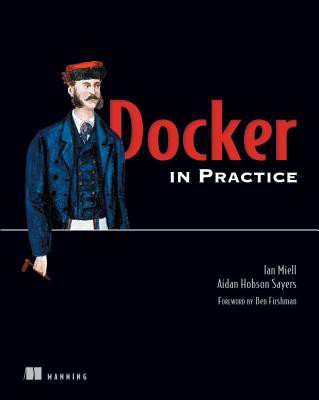Jenkins Pipelines are becoming the standard way to programmatically specify your CI flow.
I started playing with Jenkins Pipelines using the web interface, then hit a block as I didn’t really know the ropes.
Here’s some things I wish I’d known first:
1) Wrap work in stages
Want those neat stages to show up in the Jenkins job homepage?

Then wrap your stuff in stages, eg:
[...]
stage('setupenv') {
node(nodename) {
sh 'mkdir -p ' + builddir
dir(builddir) {
checkout([$class: 'GitSCM', branches: [[name: '*/master']], doGenerateSubmoduleConfigurations: false, extensions: [[$class: 'SubmoduleOption', disableSubmodules: false, parentCredentials: false, recursiveSubmodules: true, reference: '', trackingSubmodules: false]], submoduleCfg: [], userRemoteConfigs: [[url: 'https://github.com/ianmiell/shutit']]])
}
}
}
stage('shutit_tests') {
node(nodename) {
dir(builddir + '/shutit-test') {
sh('PATH=$(pwd)/..:${PATH} ./run.sh -s tk.shutit.shutit_test shutit_branch master -l info 2>&1')
}
}
}
[...]
It’s a good idea to keep stages discrete, as they can be isolated from one another – for example, you could switch one stage to another node (see below) if you want (but then you might want to look into stash()ing files…).
2) Wrap Steps in a Node
All code that does steps in a pipeline should be wrapped in a node block:
node() {
sh('env')
}
If the node is not specified, eg:
def myvariable='blah'
then by default it will run on the master.
You can specify the node by supplying an argument:
node('mynode') {
[...]
}
If the pipeline code is not in a node block, then it’s run on the master in some kind of lightweight node/thread.
3) Checkout scm doesn’t work in browser UI!
This was a gotcha for me. ‘checkout scm’ is a great single line to add to your script that checks out the source the Jenkinsfile is taken from.
But when updating the script in the Jenkins browser interface this won’t work!
When storing your source in source control, you can then switch to using ‘checkout scm’. Otherwise use the ‘git’ function.
If you like this, you might like one of my books:
Buy in a bundle here
4) You can use functions
Oh yeah, and functions are available to you too.
Handy, eg for seeing whether a node is available (see next tip)…
5) Use try / catch to dynamically decide what to do
Your code can be wrapped in a try/catch block.
I use this along with a function and timeout() to see whether a node is available before using it:
def nodetest() {
sh('echo alive on $(hostname)')
}
// By default we use the 'welles' node, which could be offline.
usenode='welles'
try {
// Give it 5 seconds to run the nodetest function
timeout(time: 5, unit: 'SECONDS') {
node(usenode) {
nodetest()
}
}
} catch(err) {
// Uh-oh. welles not available, so use 'cage'.
usenode='cage'
}
// We know the node we want to use now.
node(usenode) {
[...]
}
6) WTF is the Deal with Pipeline Syntax vs Groovy?
Pipeline syntax may be preferable to groovy, but is newer. See here:
https://jenkins.io/blog/2016/12/19/declarative-pipeline-beta/
The docs confusingly assume a familiarity with both, and it’s not clear to the casual user why there’s these two ways of doing the same thing.
7) It’s Still a Bit Buggy
In one memorable evening I tried to change the branch a Jenkinsfile was pulled from, but the old branch persisted in my Jenkins build. It wouldn’t pick up changes from the branch I’d change to.
I ended up having to create a new job and delete the old one.
Sometimes you have to kick off a job that fails in order to get the ‘new’ pipeline to be picked up by Jenkins.
8) Input
Want to force user input before continuing?
Simple:
input('OK to continue?')
But – seemed to work better for me when I had defined stages first!
If you like this, you might like one of my books:
Learn Git the Hard Way, Learn Terraform the Hard Way,
9) Locking
If you’re running jobs in branches and want to ensure they don’t interfere with each other on the same Jenkins node, then locks are a simple way to ensure the serial running of jobs.
Here’s an example from a Jenkinsfile I wrote:
lock('cookbook_openshift3_tests') {
stage('setupenv') {
node(nodename) {
sh 'mkdir -p ' + builddir
dir(builddir) {
////when in source...
checkout([$class: 'GitSCM', branches: [[name: '*/' + env.BRANCH_NAME]], doGenerateSubmoduleConfigurations: false, extensions: [[$class: 'SubmoduleOption', disableSubmodules: false, parentCredentials: false, recursiveSubmodules: true, reference: '', trackingSubmodules: false]], submoduleCfg: [], userRemoteConfigs: [[url: 'https://github.com/IshentRas/cookbook-openshift3']]])
}
}
}
[...]
}
10) Parameterized Jobs
These are the bomb. They allow you to parameterize your job so you can do more surgical builds when necessary. You can allow for defaults (like the BRANCH_NAME below), while giving users an interface to run their builds.
We use this internally to build test environments on demands.
Here’s an extract from the same Jenkinsfile:
#!groovy
try {
properties([parameters([
string(name: 'BRANCH_NAME', defaultValue: env.BRANCH_NAME, description: 'Branch to build'),
string(name: 'builddir', defaultValue: 'cookbook-openshift3-test-' + env.BUILD_NUMBER, description: 'Build directory'),
string(name: 'nodename', defaultValue: 'cage', description: 'Node to build on'),
string(name: 'CHEF_VERSION', defaultValue: '12.16.42-1', description: 'Chef version to use, eg 12.4.1-1'),
string(name: 'OSE_VERSIONS', defaultValue: '1.3 1.4 1.5', description: 'OSE versions to build, separated by spaces'),
string(name: 'CHEF_IPTABLES_COOKBOOK_VERSION', defaultValue: 'latest', description: 'iptables cookbook version, eg 1.0.0'),
string(name: 'CHEF_SELINUX_COOKBOOK_VERSION', defaultValue: 'latest', description: 'selinux cookbook version, eg 0.7.2'),
string(name: 'CHEF_YUM_COOKBOOK_VERSION', defaultValue: 'latest', description: 'yum cookbook version, eg 3.6.1'),
string(name: 'CHEF_COMPAT_RESOURCE_COOKBOOK_VERSION', defaultValue: 'latest', description: 'compat_resource cookbook version'),
string(name: 'CHEF_INJECT_COMPAT_RESOURCE_COOKBOOK_VERSION', defaultValue: 'false', description: 'whether to inject compat_resource cookbook version (eg true for some envs)'),
booleanParam(name: 'dokitchen', defaultValue: true, description: 'Whether to run kitchen tests'),
booleanParam(name: 'doshutit', defaultValue: true, description: 'Whether to run shutit tests')
])])
lock('cookbook_openshift3_tests') {
stage('setupenv') {
node(nodename) {
[...]
if (dokitchen) {
stage('kitchen') {
[...]
Again, I had issues getting Jenkins to ‘pick up’ the fact that the job was parameterized when I added it to a Jenkinsfile
Examples
There are Jenkinsfile examples here but they look a bit unloved.
Some gists were more useful to me.
This intro was pretty good too.
And the canonical reference is here.
Docker in Practice
This is a work in progress from the second edition of Docker in Practice
Get 39% off with the code: 39miell2


Nice post Ian, may be worth adding retry function which can be used to wrap flaky or long running steps, I think it is still missing from pipelines. I was going around it with something like this
def withRetry(block) {
waitUntil {
try {
block()
return true;
} catch(error) {
echo “ERROR: Problem running the pipeline: ${error}”
input “Stage failed, retry?”
return false;
}
}
}
Are you saying that jobs will run on the master, unless in a node stanza, even when the master has been explicitly assigned 0 executor slots?
Not jobs, code.
Alright, one I’ve run into (and found this while trying to solve) is, when writing a block of text via writeFile with something like:
writeFile file: ‘SecGrps.parms.json’,
text: ”’
[
{
“ParameterKey”: “TargetVPC”,
“ParameterValue”: “${TargetVpc}”
}
]
”’
How do you make it so it subs in a param’s value rather than rendering it with the literal string? In the above case, the resultant file looks like:
[
{
“ParameterKey”: “TargetVPC”,
“ParameterValue”: “${TargetVpc}”
}
]
Which isn’t exactly what I’m trying to achieve. :p
N/m… Switching to ` ${env.ParmName}` within the `writeFile`’s context sorted things.
I have the pipeline script with string parameters. The Target parameter will fail if multiple comma separated inputs (target1, target2) are provided in Jenkins. How can I restrict the Jenkins pipeline to accept just one parameter (target) as parameter and not multiple comma separated values?
Accepting or handling parameters that are comma separated, simply means you want to go
targets = target.split(‘,’) ; targets.each { target -> /*some code here*/ }
You may decide to ignore errors currentBuild.result= “SUCCESS” in the closure, and handle them later and re-throw errors in the report phase, to prevent one bad target blocking running the build for other targets.